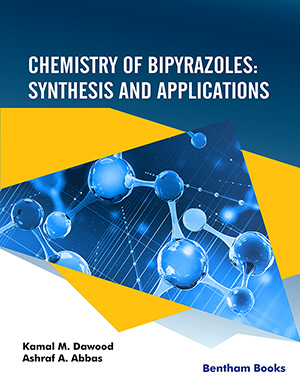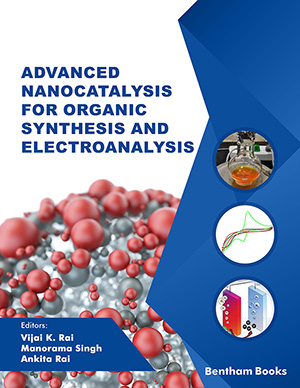
Abstract
Lysophospholipids (LPLs) are secreted physiologically by various cell types. They exhibit a broad range of biological activities, playing highly important roles in the development, activation and regulation of the immune system and are also related to cancerous cells proliferation. Consequently LPLs or their receptors have become attractive targets for developing drugs specially in the treatment of cancers. Then the development of new synthetic methods for the preparation of LPLs is a challenging problem because the elucidation of the mechanistic details involved in the enzymological, cell-biological and membrane–biophysical roles of LPLs relies obviously on the availability of structurally diverse compounds. We will focus our attention on the chemical and enzymatic synthesis of LPLs and on the biological activity in particular of three LPLs, namely 2-lysophosphatidylcholine (2–LPC), lysophosphatidic acid (LPA) and sphingosine– 1–phosphate (S1P).
Keywords: Lysophospholipids, lysophosphatidylcholine, lysophosphatidic acid, sphingosine–1–phosphate, second messenger.
Current Organic Chemistry
Title:Lysophospholipids: Synthesis and Biological Aspects
Volume: 17 Issue: 8
Author(s): Paola D’Arrigo and Massimo Scotti
Affiliation:
Keywords: Lysophospholipids, lysophosphatidylcholine, lysophosphatidic acid, sphingosine–1–phosphate, second messenger.
Abstract: Lysophospholipids (LPLs) are secreted physiologically by various cell types. They exhibit a broad range of biological activities, playing highly important roles in the development, activation and regulation of the immune system and are also related to cancerous cells proliferation. Consequently LPLs or their receptors have become attractive targets for developing drugs specially in the treatment of cancers. Then the development of new synthetic methods for the preparation of LPLs is a challenging problem because the elucidation of the mechanistic details involved in the enzymological, cell-biological and membrane–biophysical roles of LPLs relies obviously on the availability of structurally diverse compounds. We will focus our attention on the chemical and enzymatic synthesis of LPLs and on the biological activity in particular of three LPLs, namely 2-lysophosphatidylcholine (2–LPC), lysophosphatidic acid (LPA) and sphingosine– 1–phosphate (S1P).
Export Options
About this article
Cite this article as:
D’Arrigo Paola and Scotti Massimo, Lysophospholipids: Synthesis and Biological Aspects, Current Organic Chemistry 2013; 17 (8) . https://dx.doi.org/10.2174/1385272811317080007
| DOI https://dx.doi.org/10.2174/1385272811317080007 |
Print ISSN 1385-2728 |
| Publisher Name Bentham Science Publisher |
Online ISSN 1875-5348 |
Call for Papers in Thematic Issues
Catalytic C-H bond activation as a tool for functionalization of heterocycles
The major topic is the functionalization of heterocycles through catalyzed C-H bond activation. The strategies based on C-H activation not only provide straightforward formation of C-C or C-X bonds but, more importantly, allow for the avoidance of pre-functionalization of one or two of the cross-coupling partners. The beneficial impact of ...read more
Electrochemical C-X bond formation
Conventional methods for carrying out carbon–X bond formation are typically conducted at harsh reaction conditions, and rely on expensive catalysts as well as the use of stoichiometric, and perhaps toxic, oxidants. In this regard, electrochemical synthesis has recently been recognized as a sustainable and scalable strategy for the construction of ...read more
From Lab Bench to Algorithm: The Future of Organic Chemistry Powered by AI
Organic chemistry, with its intricate dance of molecules and reactions, is undergoing a transformation fuelled by the power of Artificial Intelligence (AI) and Machine Learning (ML). The integration of AI/ML with Organic Chemistry is revolutionizing the field by enhancing the efficiency and accuracy of chemical research and development. These technologies ...read more
N-Heterocyclics: Synthesis, Computational Studies, and Coordination Chemistry - A synthetic perspective
N-heterocycles, such as phenanthroline, quinoline, or their organometallic complexes, are widely used in a variety of fields, including chemistry, biochemistry, and coordination chemistry. They play a key role in many chemical and biological processes as biological ligands, medicinal agents, catalysts in organic synthesis, molecular probes and sensors, as well as ...read more
Related Journals
 46
46
- Author Guidelines
- Graphical Abstracts
- Fabricating and Stating False Information
- Research Misconduct
- Post Publication Discussions and Corrections
- Publishing Ethics and Rectitude
- Increase Visibility of Your Article
- Archiving Policies
- Peer Review Workflow
- Order Your Article Before Print
- Promote Your Article
- Manuscript Transfer Facility
- Editorial Policies
- Allegations from Whistleblowers
- Announcements
Related Articles
-
Gestational Diabetes and the Metabolic Syndrome: Can Obesity and Small, Dense Low Density Lipoproteins be Key Mediators of this Association?
Current Pharmaceutical Biotechnology Meet Our Editorial Board Member
Current Drug Delivery How Should We Treat Hypertension and Dyslipidemia in Patients with Prediabetes?
Current Pharmaceutical Design Statins May Prevent Atherosclerotic Disease in OSA Patients without Co-Morbidities?
Current Vascular Pharmacology Smoking and Cardiovascular System: Cellular Features of the Damage
Current Pharmaceutical Design MicroRNAs and Bone Regeneration
Current Genomics Pulmonary Rehabilitation as Evaluated by Clinical Trials: An Overview
Reviews on Recent Clinical Trials Cardiac Specific Overexpression of hHole Attenuates Isoproterenol–Induced Hypertrophic Remodeling through Inhibition of Extracellular Signal-Regulated Kinases (ERKs) Signalling
Current Molecular Medicine Endocrinological Aspects of Proteinuria and Podocytopathy in Diabetes: Role of the Aldosterone/Mineralocorticoid Receptor System
Current Diabetes Reviews Pharmacogenetics of Statins Therapy
Recent Patents on Cardiovascular Drug Discovery Onco-Surgical Management of Colo-Rectal Liver Metastases in Older Patients: A New Frontier in the 3<sup>rd</sup> Millennium
Anti-Cancer Agents in Medicinal Chemistry Agents Complexing Copper as a Therapeutic Strategy for the Treatment of Alzheimers Disease
Current Alzheimer Research Gender, Hormones and the Transmissible Encephalopathies
Current Medicinal Chemistry - Immunology, Endocrine & Metabolic Agents An Artificial Immune Network Based Algorithm for Diabetes Diagnosis
Protein & Peptide Letters Pathogenesis and Clinical Features of Obesity and Insulin Resistance
Immunology, Endocrine & Metabolic Agents in Medicinal Chemistry (Discontinued) Myocardial Infarction Following Atherosclerosis in Murine Models
Current Drug Targets Mitochondrial and Nuclear Genes of Mitochondrial Components in Cancer
Current Genomics Hypertension in Peripheral Arterial Disease
Current Pharmaceutical Design News in the Indications of Direct Oral Anticoagulants According to the American College of Chest Physicians 2016 Guidelines
Current Drug Metabolism Imaging of Integrins as Biomarkers for Tumor Angiogenesis
Current Pharmaceutical Design





















